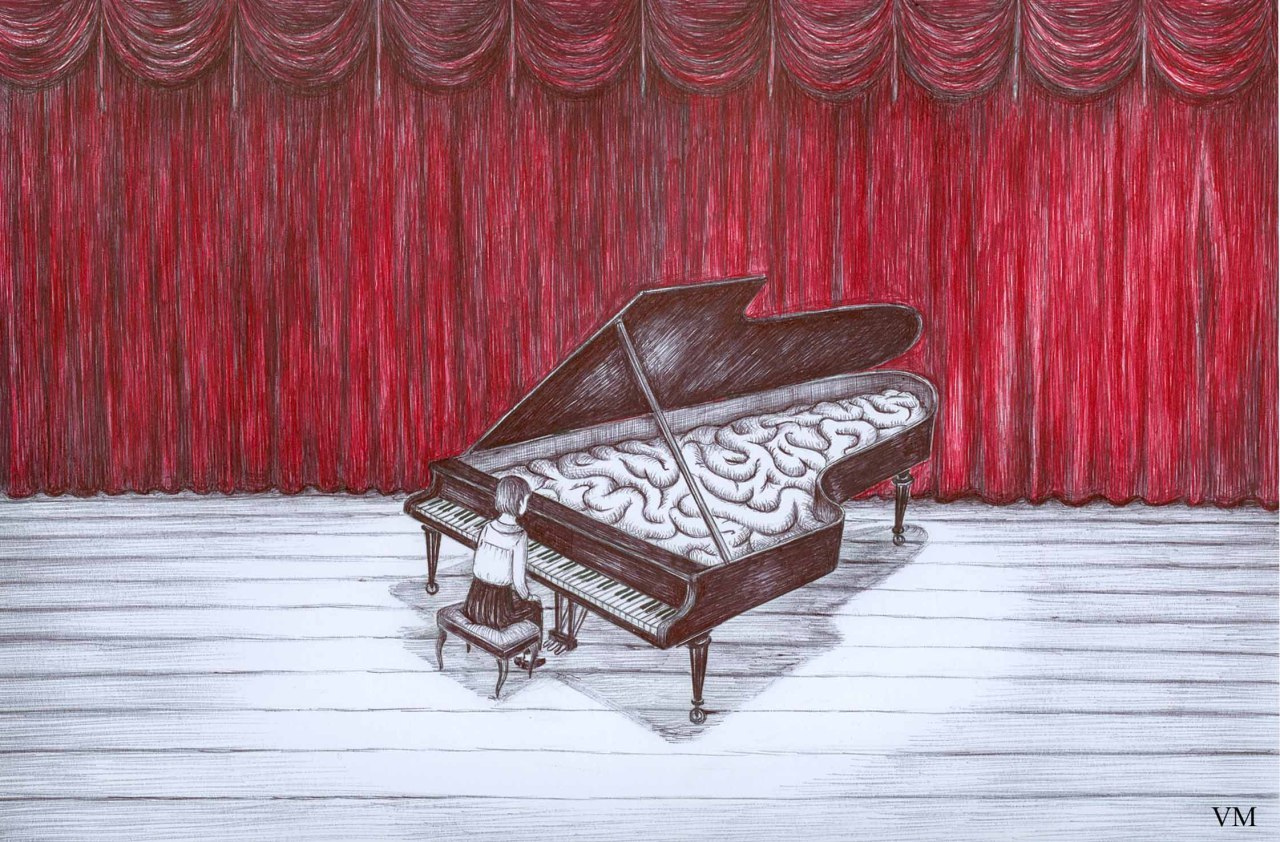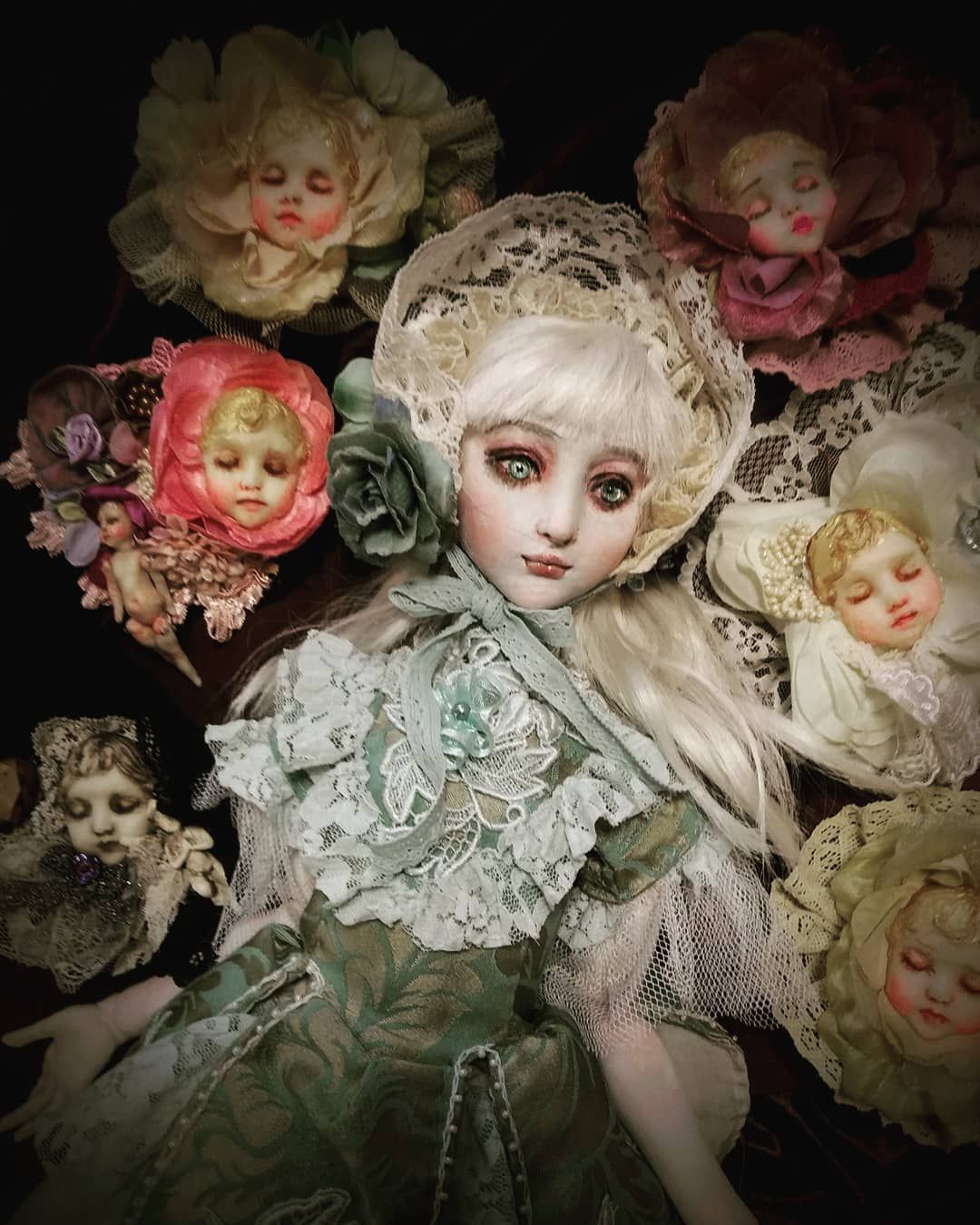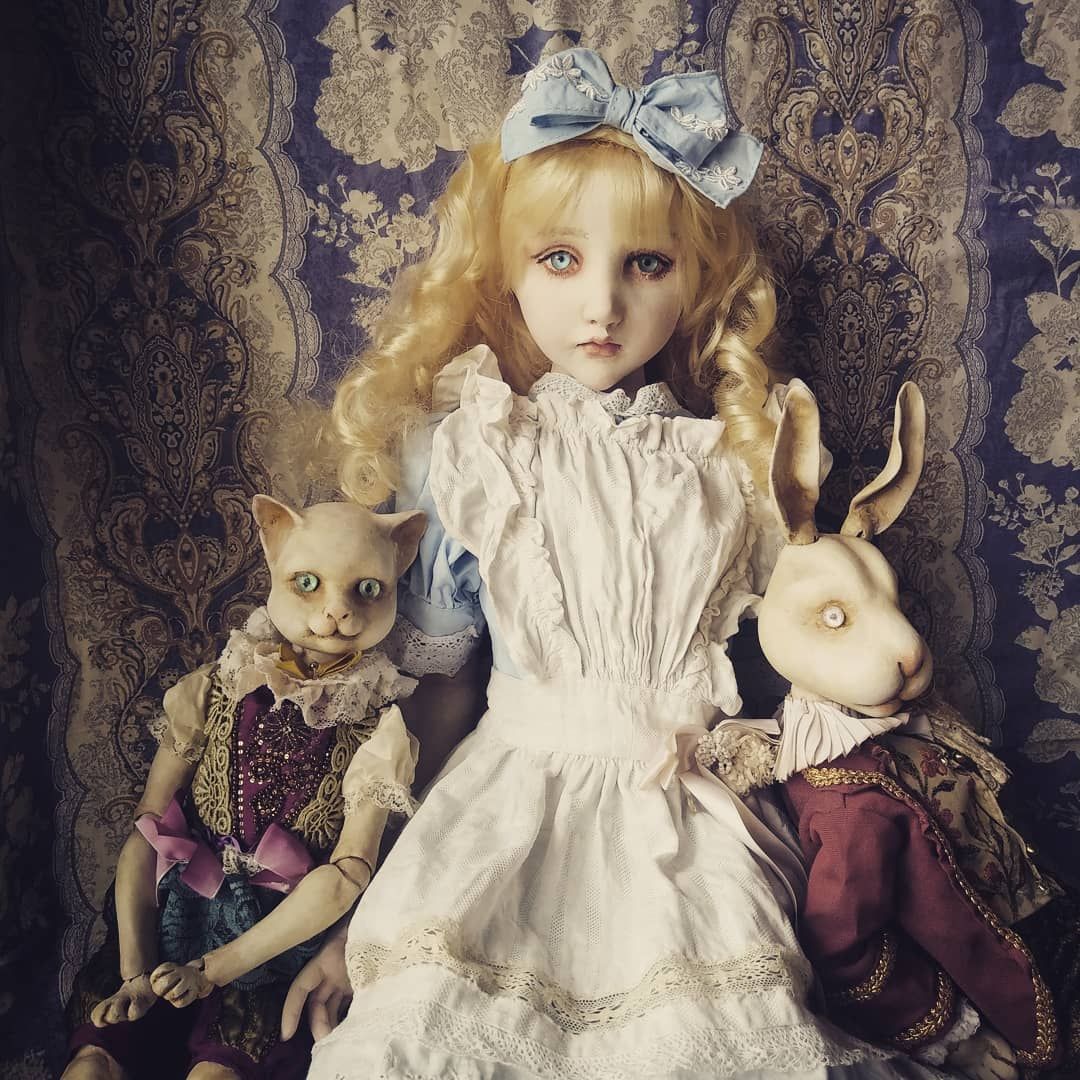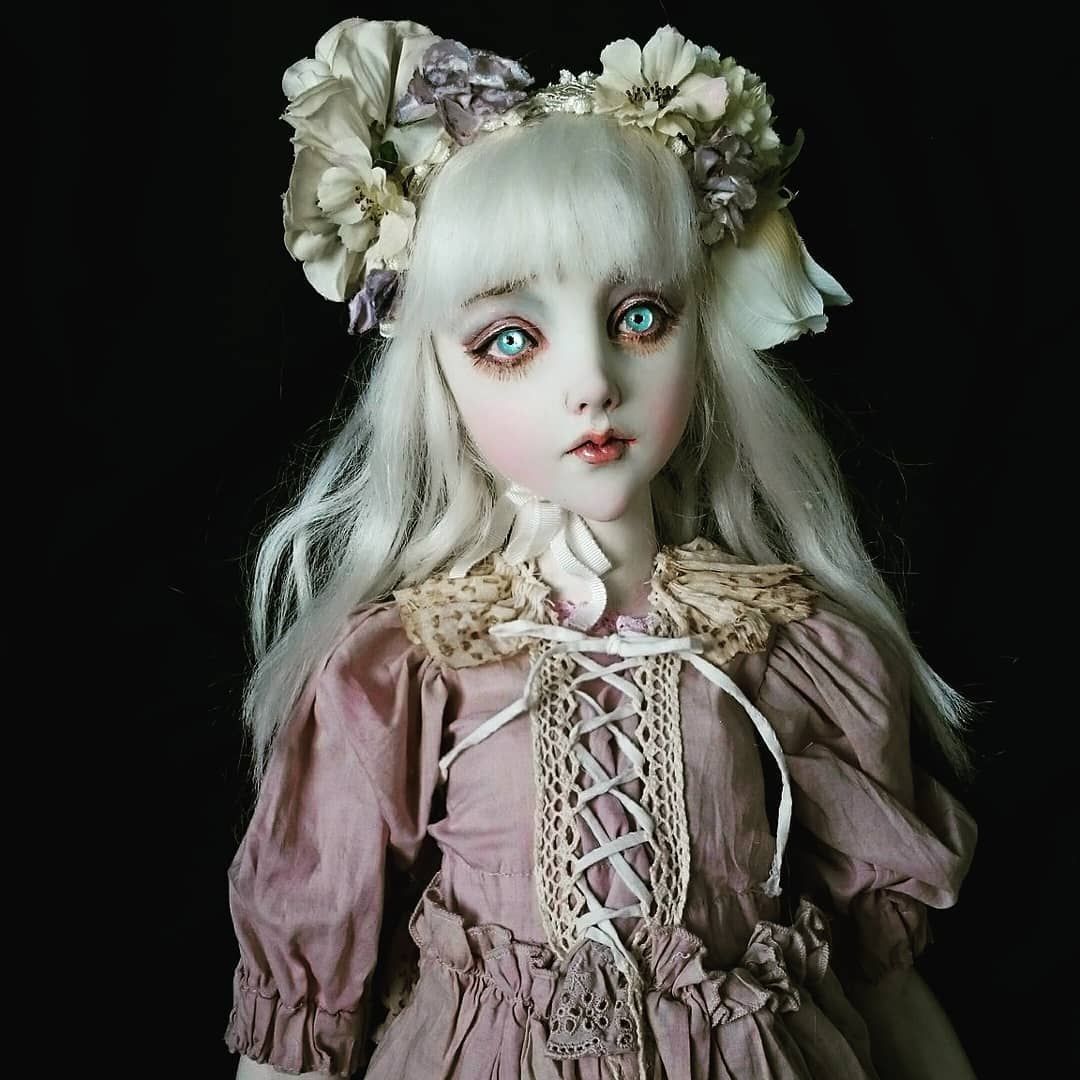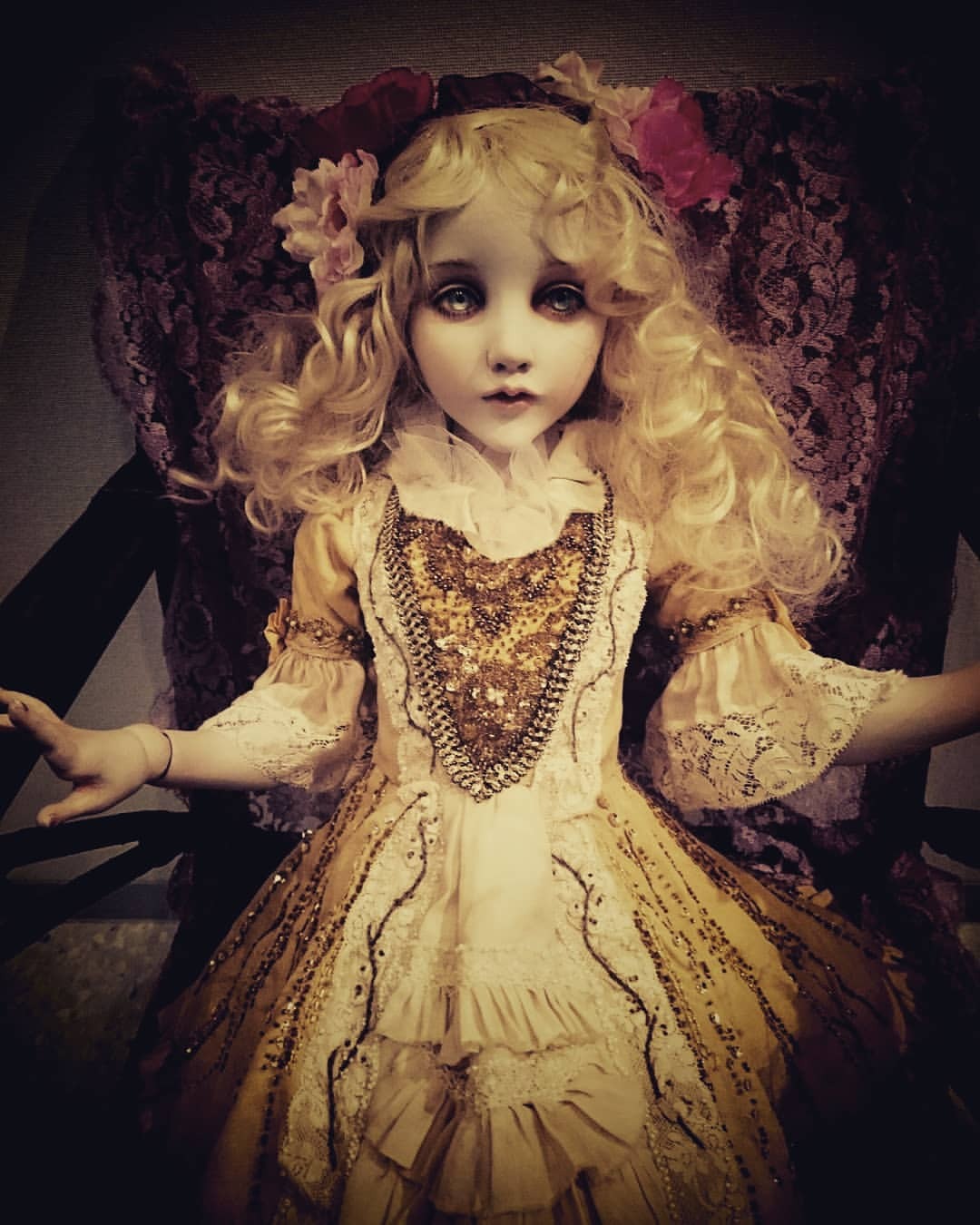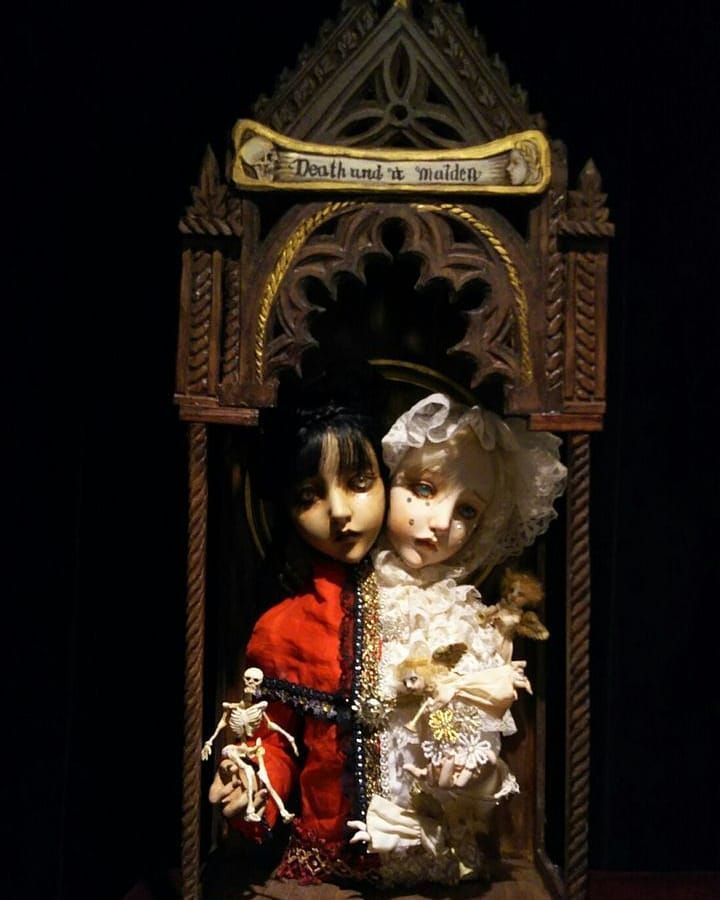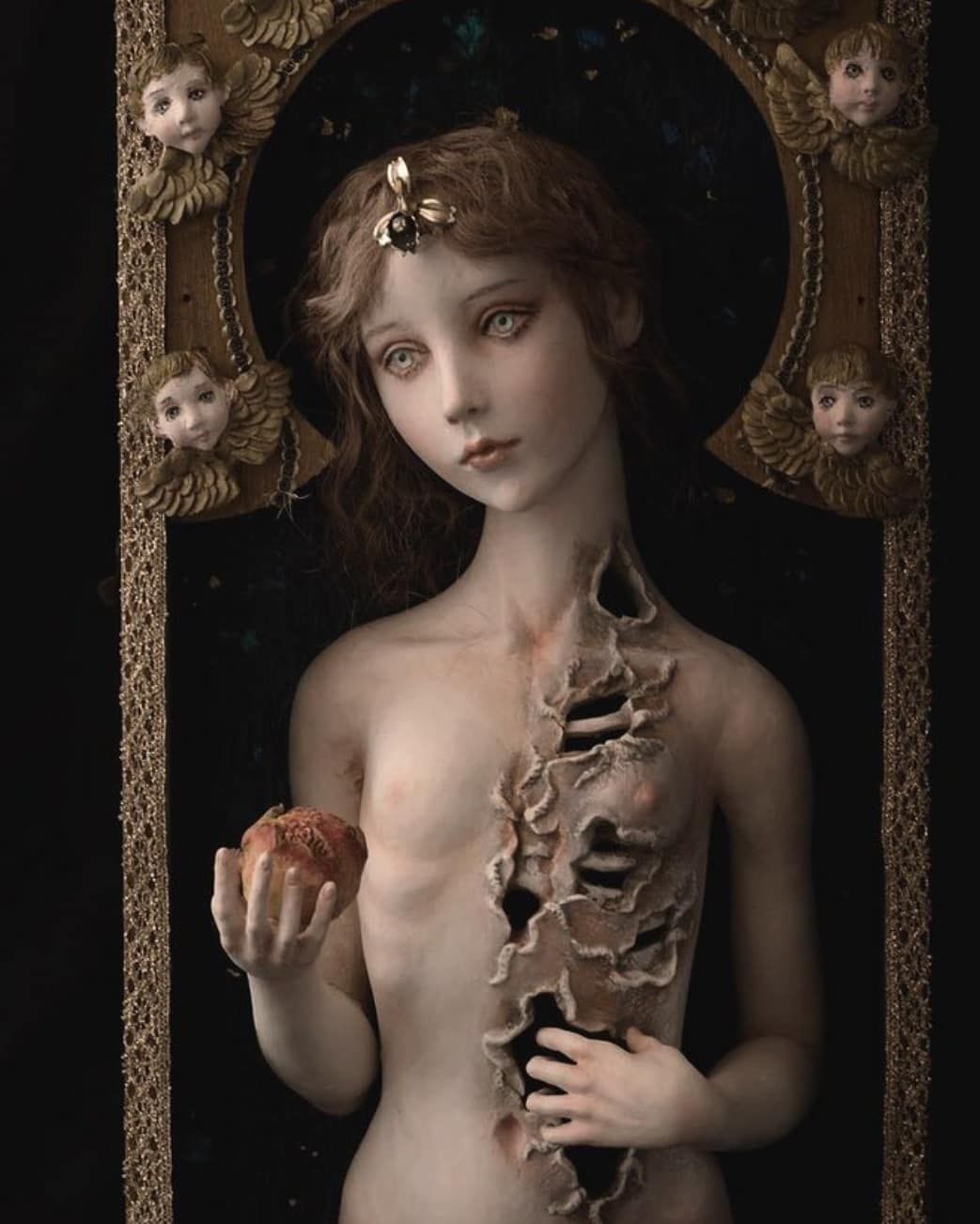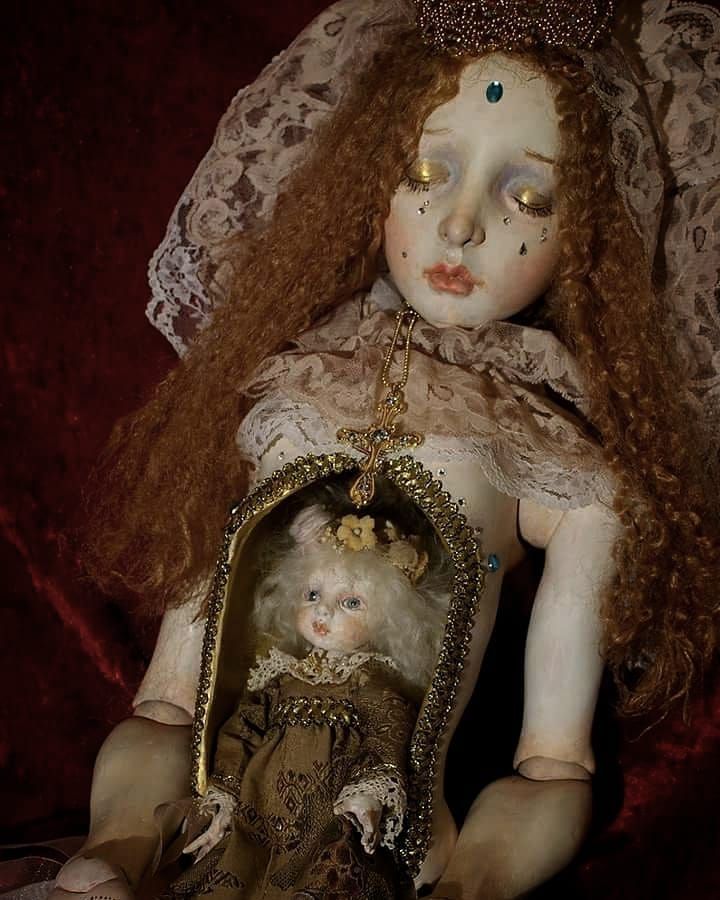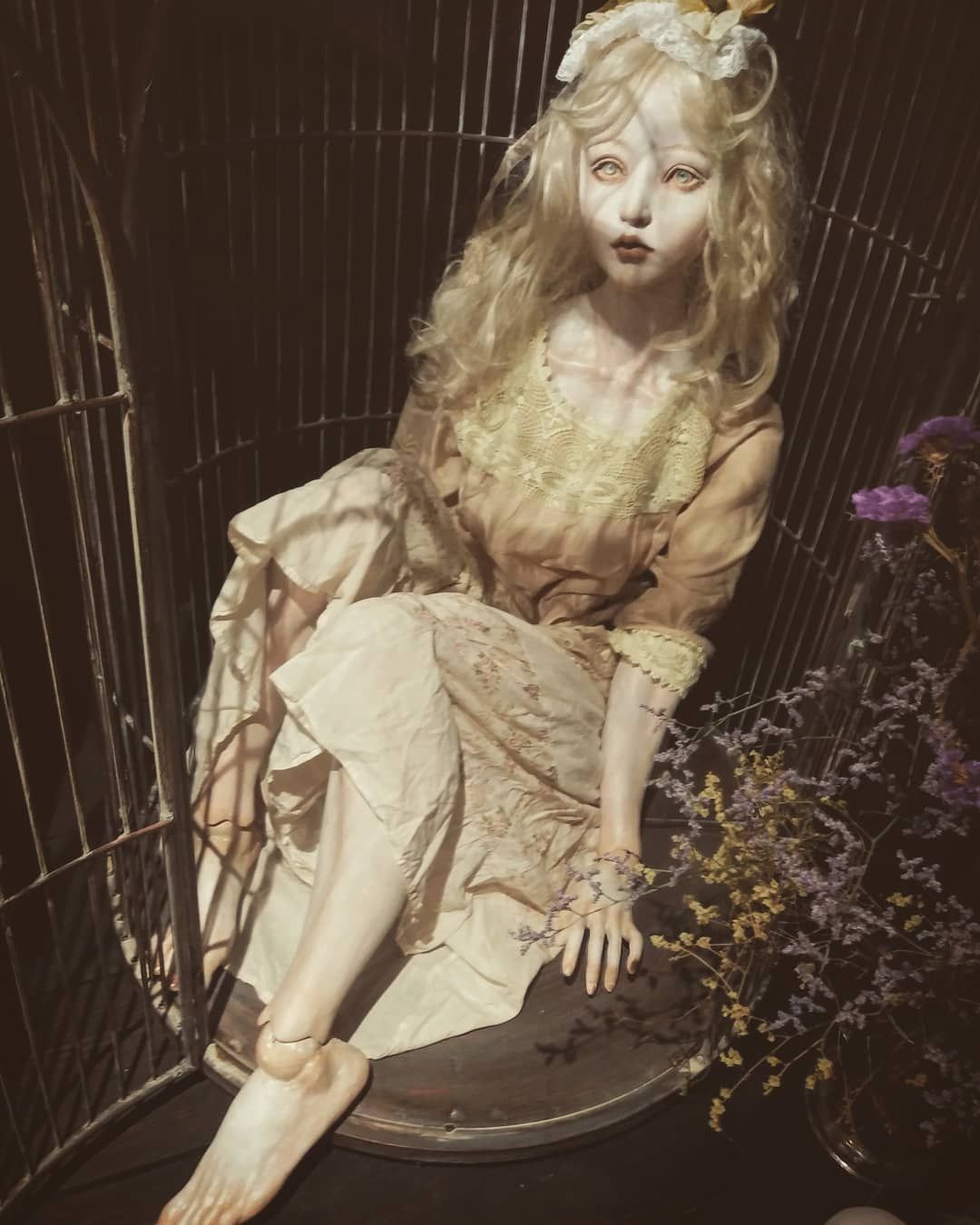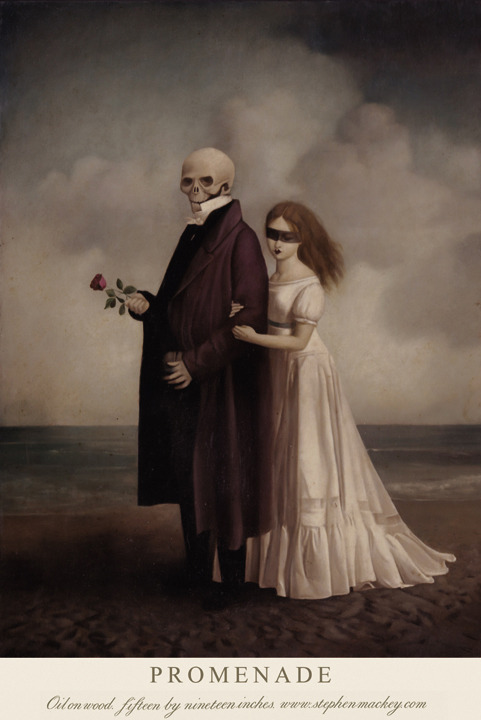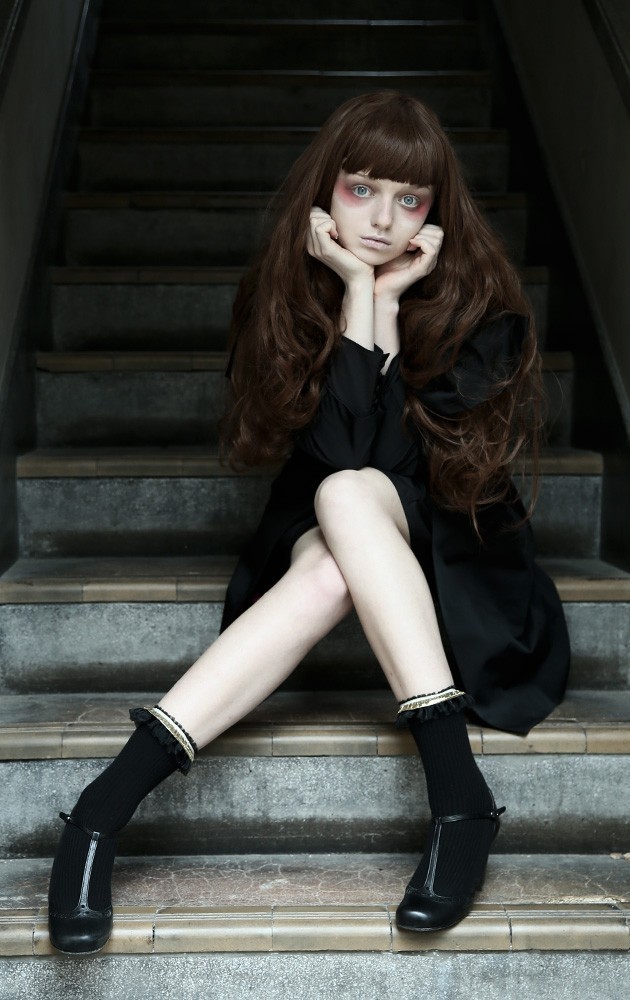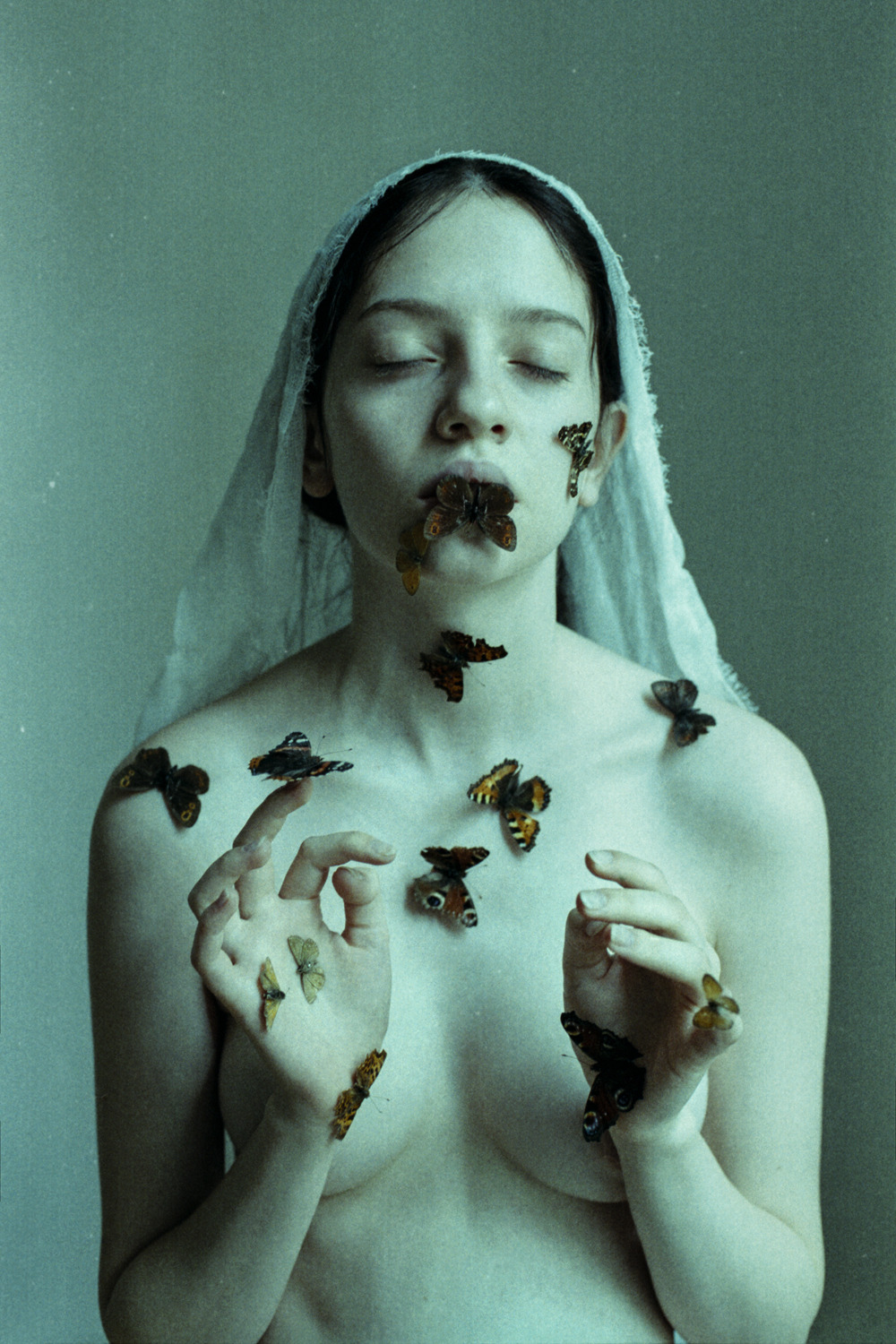John William Waterhouse’s portrayal of John Keats’s poem “Isabella; or, The Pot of Basil”, is dreamy, which is typical for his oeuvre, and, following the tradition of the Pre-Raphaelites, it is rich in details, but the seemingly innocent scene hides a darker theme. In this painting, Waterhouse beautifully unites the Medieval macabre imagination of Boccaccio with the sensuous imagery created by Keats in his poem.
 John William Waterhouse (1849-1917) Isabella and the Pot of Basil, 1907
John William Waterhouse (1849-1917) Isabella and the Pot of Basil, 1907
In a secluded spot of a beautiful garden somewhere in Florence, a damsel known by the name of Isabella is kneeling beside a pot of basil, embracing it with her gentle white arms and “gazing amorously upon it with all her desire”. The air is warm and fragrant, but laced with sadness. The spot seems secretive and the path that leads to it is rarely used. With no living soul around her, she must have whispered the woes of her heart to the greenery around her: the grass, the ivy, the hedge, have all become friends. The fragile red poppy that grew next to her white gown, along with a skull on the pedestal of the basil pot, could be interpreted as signs of the other world. Poppy is a flower connected to dreams, sleep and death. She is dressed in a long white gown that touches the ground with intricate Medieval-style sleeves. Her auburn hair falls on her back as she tilts her head and sighs at the inequity of her destiny. How can a maiden so young and so pretty be so sad?
Ahh, but poor Isabella is ill from sadness. In a feverish state her gaze turned blurry from tears, and yet, with wild perseverance she wraps her weak arms around the pot, pining and weeping, day upon day, night after night. Her heart aches for something she can never have, and not even a thousand tears would bring the dear face of Lorenzo back to life; the anguish that sits on her chest is heavier than a stone, and yet her face shows longing rather than pain, as if her devotion, her pining and daydreaming upon that pot of fragrant basil bring her serenity. For, what else can she do but weep her days away?

John Keats’s narrative poem “Isabella” is adapted from a story in Boccaccio’s Decameron (IV day, 5th story) which tells the tale of Lisabetta and Lorenzo. (A note: Keats changed the setting of the story from Messina to Florence, and the name from Lisbetta to Isabella.) In Decameron, Lisbetta is a fair and well-manered maiden who lives in the town of Messina with her three brothers who want her to marry a rich and respectable man, but Lisbetta falls in love with Lorenzo, the dashing young employee of her brothers. After enjoying the delights of each other’s company, the young lovers are discovered and the brothers decide to take things into their hands. On day they take Lorenzo into the deepest darkest forest and murder him. Lisbetta, not hearing from Lorenzo for so long, grows impatient and worried until one night he appears in her dream and tells her what had happened and where his body lies. After that “she awoke and giving faith to the vision, wept bitterly.” Lisbetta finds his body in the forest, and despite her woes remains cool-headed and knowing that she can’t take the whole body, she cuts his head off and wraps it in a napkin and:
“…returned home, where, shutting herself in her chamber with her lover’s head, she bewept it long and bitterly, insomuch that she bathed it all with her tears, and kissed it a thousand times in every part. Then, taking a great and goodly pot, of those wherein they plant marjoram or sweet basil, she set the head therein, folded in a fair linen cloth, and covered it with earth, in which she planted sundry heads of right fair basil of Salerno; nor did she ever water these with other water than that of her tears or rose or orange-flower water. Moreover she took wont to sit still near the pot and to gaze amorously upon it with all her desire, as upon that which held her Lorenzo hid; and after she had a great while looked thereon, she would bend over it and fall to weeping so sore and so long that her tears bathed all the basil, which, by dint of long and assiduous tending, as well as by reason of the fatness of the earth, proceeding from the rotting head that was therein, waxed passing fair and very sweet of savour.”

To rest your eyes from Waterhouse, here is another version: Arthur Nowell, Isabella and the Pot of Basil, 1904
She sits and weeps over that pot of basil with mad devotion, adoringly wrapping her arms around it, as is she was enchanted or cursed like the Lady of Shalott. It arises suspicion in her brothers and one day they turn out the pot and find a head, not yet rotten, of Lorenzo. In fear that things might get revealed, they move to Naples and Lisbetta is once again separated from her lover, or this time, from his head. It is indeed a pity that they moved Lorenzo’s rotting head because it fertilised the soil in the pot and the basil grew ever so lush and fragrant. Every good gardener knows this is the secret to a healthy plant!
Lisbetta eventually dies from sadness: “The damsel, ceasing never from lamenting and still demanding her pot, died, weeping; and so her ill-fortuned love had end.”
Poor, poor Isabella! Waterhouse must have thought that too, when he chose to portray the scene of a sad tale of love first written by Boccaccio and later sang by Keats whose eloquence and melancholic disposition added the lyrical and sensuous dimension. Who knew better than Keats the ache of wanting so desperately something you cannot have? Did he not yearn for the sweet nectar of life, and was denied to taste the very drink? Having died so young from consumption, did he not feel on his own skin the transience of everything which hurts like knives piercing your chest, and therefore nurtured beauty in his verses. Her is what his beautiful poetic vision tells us of Isabella and Lorenzo falling in love:
“They could not in the self-same mansion dwell
Without some stir of heart, some malady;
They could not sit at meals but feel how well
It soothed each to be the other by;
They could not, sure, beneath the same roof sleep
But to each other dream, and nightly weep.
With every morn their love grew tenderer,
With every eve deeper and tenderer still…”

John William Waterhouse (1849-1917) was not a member of the Pre-Raphaelite Brotherhood but he, like many other artists, accepted their style and subject matter. He too dipped his paint brush into the paint of dreams, and painted scenes from mythology, Medieval romances, love and longing. Pre-Raphaelites drew inspiration from poetry and even though for Rossetti Dante was God, we could rightfully say that John Keats was placed on a pedestal. Out of all English poets of Romanticism, Keats was the most lyrical, the one who emphasised the greatness of beauty. This ideal brought him together with the Pre-Raphaelites. It is very likely that Waterhouse had Keats’s and not Boccaccio’s version of the story in mind when he painted this painting. A tale of sad love was perfect for a Pre-Raphaelite canvas; before Waterhouse, both Rossetti with his infatuations with Dante’s Beatrice and her death, and Millais’ with his paintings such as ‘A Huguenot’ tackled the subject.
Keats’s poem “Isabella” is absolutely beautiful, but these verses are perhaps my favourite and tell us about the growing love between Isabella and Lorenzo:
“Parting they seem’d to tread upon the air,
Twin roses by the zephyr blown apart
Only to meet again more close, and share
The inward fragrance of each other’s heart.
She, to her chamber gone, a ditty fair
Sang, of delicious love and honey’d dart…”
Keats’s verses and the Pre-Raphaelite canvases both possess sensuality in abundance: Keats’s rich, delicate yet passionate descriptions match perfectly with the vibrantly coloured, richly textured and emotionally charged paintings of the Pre-Raphaelites.

Out of all the stories I’ve read from “Decameron” this one is my favourite because underneath the sad tale of love scenario, which always appeals my romantic whimsy, it has a strong dark and macabre mood. I mean, the girl weeps and adoringly gazes at the pot of basil, knowing that the head of her lover is buried in it. Can you imagine the head which used to belong to a beautiful man she loved slowly rotting in the pot, his hair mingling with the roots of basil… It’s eerie and kind of revolting, and I say this with a creepy smile on my face because it appeals to me at the same time. John Keats, on the other hand, focused on the sensuality of the story and its melancholy, veiling it in beauty: rose petals, zephyrs, soft lips and sad gazes, everything is ripe, warmth, fragrant, in bloom. And this is how he ends the poem:
“And so she pined, and so she died forlorn,
Imploring for her Basil to the last.
No heart was there in Florence but did mourn
In pity of her love, so overcast.
And a sad ditty of this story born
From mouth to mouth through all the country pass’d:
Still is the burthen sung—“O cruelty,
“To steal my Basil-pot away from me!”
So, happy birthday, John Keats!
Tags: 1907., art, basil, Boccaccio, dark imagination, Decameron, Dreamy, English Romanticism, Halloween, imagination, Isabella and Lorenzo, Isabella and the pot of basil, Italy, John Keats, John William Waterhouse, Keats, love, Macabre, Painting, Poetry, Pre-Raphaelites, rotting head, sad, sad love
 Kyōsai Kawanabe, Hell Courtesan, 1874, colour woodcut
Kyōsai Kawanabe, Hell Courtesan, 1874, colour woodcut













